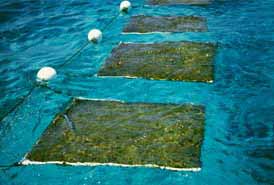Glad you like the idea. And as I mentioned in my post, a lot of the mechanisms of turf have been on the forums for a while. I read most of them going back to 2000, and a few alt.rec.aquaria ones back to '93. And I also gathered info from those who used turf in the past, or read Dynamic Aquaria, which thereby brings us back to the '70s for using turf in aquariums. The "new" part, however, is just putting the turf into a bucket, and doing it for (basically) free. The only commercial turf unit you can buy today cost $3,000 USD, and is bigger than most tanks itself. Since basically nobody is going to spend that, and because it's so big, there has been no talk of turf in the last few years, and therefore folks new to reefs don't know about turf at all. Kinda like if there were a new type of skimmer that only cost $30 but outperformed every other type including becketts, but nobody was talking about it. The purpose of me posting is to get new folks involved, without making it too technical, so that we can all benefit from what can be learned about the turf. I left the technical stuff on the original RC post.
You are correct about there being different types; fortunatly however, it requires no effort to get the right types. The current understanding of turf filtering is that the key is to grow real turf, which is reddish/brown in color, and stiff like astro turf in texture, and to remove the green hair/slime algae that grows first and/or on top of the turf. In otherwords, green hair/slime is not turf; it's a nuisance algae in this application, and it prevents the real turf from getting light and flow.
What happens sometimes (or what happened to folks who tried turf in the past), is that they thought that the green algae was just a different type of "turf". So they left it. But it's not turf. It's a nuisance algae covering the real turf. However it grows much faster and longer than the turf ("fast growing" does not mean high nutrient extraction, however, because most of content of green algae is water). This explains why it's the first algae to grow on a new un-seeded screen, and why even if you buy a pre-grown screen, the screen seems to morph from brownish/red into green.
But it's not morphing; it being smothered by the green. So for a screen that is less than a few months old, instead of scraping weekly all the algae off the screen, instead you should be "scrubbing" the green algae off of the turf algae (thereby leaving the turf). While the green is good in and of itself (it does do some filtering, and it will be the first to grow on a new screen), it does not compare to real red/green turf.
The trick is to keep the green hair/slime off of the turf so the turf does not get shaded. It's really easy to scrub the green off, like washing your hair. Just run tap water over it, and scrub with your fingernail. The green comes right off, and turf stays on (you'll need more than your fingernails to remove real turf.) You should hold off doing an actual scraping of the turf until the screen is completely full of it, and even then consider just scraping part of the turf at a time.
As for the nano, it was a test tank, because it's owner hated water changes. Even when he did them, N never got less that 20. Now N is zero, and P just hit zero yesterday.



